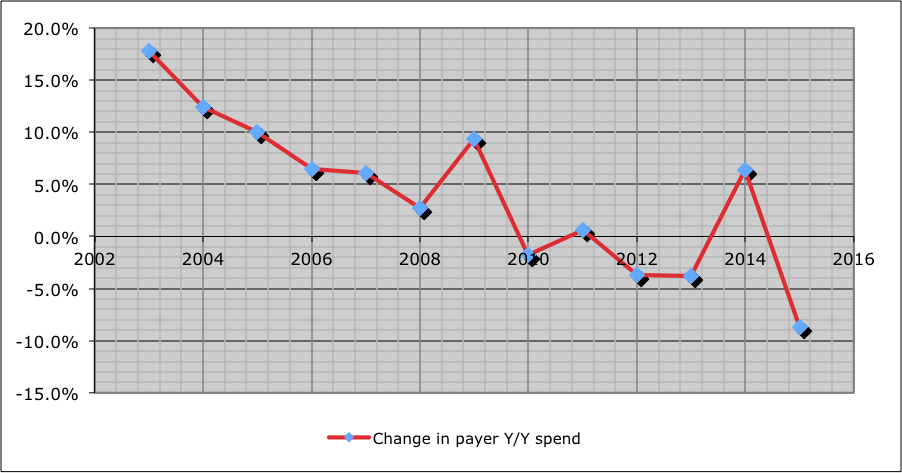ProPublica’s unethical “reporting” is being used in a PR effort to distort and demonize the workers’ comp industry.
An ethical journalistic organization would have sent a reporter to this week’s IAIABC conference, where they would have found 300 people all focused on improving a system that works quite well for the vast majority of patients and employers.
Instead PP’s “research” has been put into an “infographic“‘ that, by some unfathomable logic, attempts to link states’ occupational fatalities to a contrived, wholly inaccurate, and totally misleading “cut in benefits.” (more on that here) What one has to do with the other escapes me.
PP defines “cut in benefits” as including, among other things:
- adoption of utilization review and/or evidence-based clinical guidelines (can you IMAGINE!)
- employer direction of care (to avoid patients going to pill mills and purveyors of fake surgical implants)
- using outside medical reviewers to assess medical care
- considering a patient’s pre-existing conditions in determining if an injury should be allocated to a specific employer
The mis-infographic is here, hosted on a law firm’s website.
Allow me to describe what a PP reporter would have seen if they’d bothered to attend IAIABC, the conference that, more than any other, digs into the issues PP seems most concerned about – how injured workers are treated by the work comp system.
They would have heard a terrific presentation by three physicians on improving the quality of medical care delivered to workers comp patients, followed by much discussion among regulators on how to increase the quality of care in their states and provinces.
They would have watched over a hundred regulators and other stakeholders work for four hours to develop an agenda for continued improvements in worker outcomes, safety, medical care, and satisfaction.
They would have heard countless hallway conversations about what this state or that state is doing to speed delivery of benefits, facilitate return to work, reduce friction in the system, and what other states might be able to learn from those efforts.
They would have heard a lengthy and detailed discussion about medical treatment guidelines, and a passionate debate about how evidence-based guidelines can improve the medical care delivered to patients.
They would have heard about an industry that is working every day to reduce the volume and potency of opioids prescribed and dispensed to patients – and having a LOT of success. (cue the totally false, dishonest, and self-serving BS from self-described “injured worker advocates” about how this is adding to suffering).
They would have heard a claims exec talking about his company’s policy on paying workers; NOT waiting to make absolutely sure a claim’s been accepted, but cutting checks to pay workers’ lost wages as soon as they think the worker will be out of work for more than a couple of days.
Nope.
Why try to get the facts when it’s easier to gain pageviews by vilifying individuals who are doing their damndest to make things better?
It’s long past time each and every one of us stood up to this BS. You – yes, YOU – need to promote, emphasize, publicize your successes.
The patient you helped find a new job.
The house you built to accommodate the paraplegic with a family.
The calls you made to that doctor to get them to change the script from Fentanyl to ibuprofen and physical therapy.
The visit to the plant to figure out why there’s been several recent shoulder injuries.
The time spent talking with state legislators about the importance of prescribers checking Prescription Drug Databases.
The multiple calls with the injured worker’s spouse, helping them understand and navigate the work comp system while listening to their fears and assuring them the check’s been cut.
What does this mean for you?
Sure, you can follow the usual insurance company playbook – don’t say ANYTHING because someone could misconstrue it.
THAT’s worked really well, hasn’t it?





